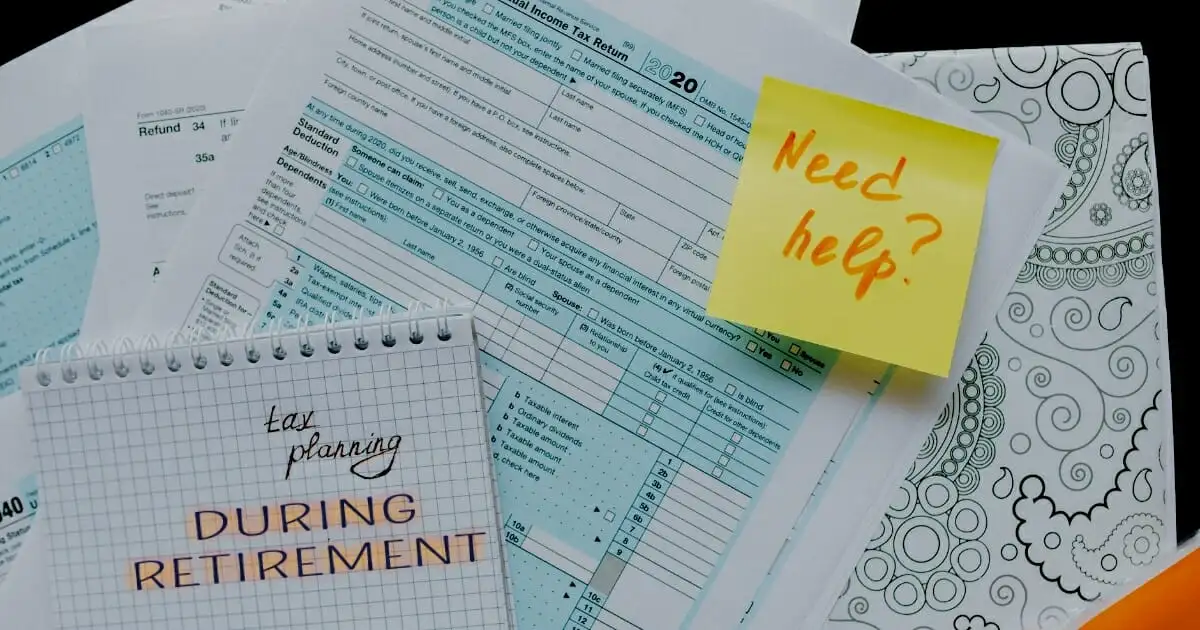As someone who has worked hard and saved diligently for retirement, it’s important to me that I have a solid understanding of my pension plan. After all, this is something that will impact me for many years to come and will play a crucial role in ensuring my financial security in retirement. That’s why I’ve compiled a list of the top 5 questions to ask about your pension plan. These questions are designed to help you better understand the type of plan you have, how much you need to invest, contribution limits, fees associated with the plan, and withdrawal options available. By taking the time to ask these questions, you can gain a clearer understanding of your pension plan and make informed decisions about your retirement savings.
So, whether you’re just starting out or nearing retirement, read on to discover the top 5 questions you need to ask about your pension plan and why they’re so important.

What type of plan is it?
The idea of pension planning might seem tedious for some, but it is a vital aspect of financial planning. It becomes even more crucial as one prepares for their retirement. Pension plans are a popular and attractive option to save for retirement as they offer tax benefits and consistent contributions towards a retirement account. However, understanding and choosing the right pension plan can be overwhelming. Here are some tips and tricks to help you navigate your pension plan:
1. Understand the types of pension plans:
There are two primary types of pension plans; defined benefit and defined contribution plans. A defined benefit plan calculates the benefit you’ll receive at retirement based on a formula, usually including factors like your salary, the number of years you worked for your employer, and what percentage of your earnings you’ll receive as a benefit. A defined contribution plan, on the other hand, allows you to select your desired level of contribution, but the employer doesn’t promise a particular level of retirement benefits.
2. Learn how your pension is calculated:
You need to understand how your pension contribution is calculated to help you appreciate how much your retirement benefits are likely to be. For defined contribution plans, review the employer’s contribution rate, and investigate your investment options and their fees to maximize returns on your contribution.
3. Know your pension options:
A pension plan can significantly affect your retirement, and it’s essential to be familiar with your options. Consider the best choice between taking your pension as an annuity or a lump-sum payment. Additionally, understand the role and benefits of social security to reach an informed decision.
4. Start early:
Starting to save for your retirement early can have a significant impact on the quality of your retirement plan. Time allows your investment to grow, compound, and recover from market fluctuations.
5. Assess your financial goals regularly:
A periodic assessment of your pension contribution and investment options will help you adjust your plan for your current financial goals. It also helps you ascertain that your retirement contributions and benefits remain in line with your risk tolerance level.
6. Seek expert advice:
When in doubt, get assistance from professionals like financial advisors to ensure that your pension plan aligns with your financial goals and that you’re making the best possible decisions.
pension planning and contributing towards your retirement an important aspect of financial planning. Understanding your pension plan type and how your contribution is calculated is essential and forms the first step in making informed decisions. Constantly review your pension contributions and benefits to ensure that they align with your financial goals. Remember, the earlier you begin to save, the more likely you will achieve your retirement goals.
How much money do I need to invest to get started?
Investing in a pension plan can be an excellent way to ensure financial stability during retirement. However, many people are hesitant to start investing because they are unsure of how much money they need to invest to get started. This idea of “How much money do I need to invest to get started?” is both creative and attractive to those who are looking to take their first steps in planning for their retirement. Here are some tips and tricks that can help.
1. Determine your retirement goals –
Before you start investing in a pension plan, take some time to determine your retirement goals. Consider factors such as your desired retirement age, lifestyle goals, and expected expenses. This will give you a better idea of how much money you need to invest to achieve your goals.
2. Research different pension plans –
There are many different pension plans available, and each plan may have different requirements. Do your research and learn about the different plans available, the fees associated with each plan, and the potential returns.
3. Calculate your contribution amount –
Once you have determined your retirement goals and researched the different pension plans, use a pension calculator to help you determine how much money you need to invest to achieve your goals. The calculator will take into account factors such as your current age, retirement age, and expected expenses to give you a recommended contribution amount.
4. Start with what you can afford –
Don’t let the fear of not having enough money to invest deter you from starting. Start with what you can afford. Even small contributions can make a significant difference over time.
5. Re-evaluate your contributions regularly –
Your financial situation may change over time. Re-evaluate your contributions regularly to ensure that you are still on track to meet your retirement goals.
investing in a pension plan is a smart and effective way to plan for retirement. With some research, careful planning, and regular evaluation, you can determine how much money you need to invest to get started on the right track towards a financially secure retirement.
What are the contributions limits?
The idea of pension planning is gaining popularity, and many people are interested in knowing how much money they need to invest to get started. It is a creative and attractive idea that ensures you have financial security during retirement. Pension plans are designed to provide pension benefits and retirement savings to individuals. But before starting, it is important to consider several factors.
Here are some tips and tricks on how much money you need to invest to get started with a pension plan:
1. Determine Your Retirement Goals:
You need to establish your retirement goals first before determining how much money you need to invest. Consider factors such as lifestyle expenses, healthcare costs, and other retirement expenses.
2. Calculate Your Expenses:
Calculate your monthly expenses and subtract them from your monthly income. This will help you determine how much money you can save per month.
3. Know Your Pension Contribution Limits:
Pension contribution limits vary based on your income and age. Determine how much you can contribute towards your pension plan, and ensure you take advantage of any employer contributions.
4. Consider Pension Investment Options:
Understand the investment options available in your pension plan and choose the ones that suit your financial goals and risk tolerance.
5. Choose a Pension Plan:
Choose the right pension plan that suits your financial needs and goals. Compare and contrast different plans from different providers, and choose the one that offers the best deal.
6. Social Security Benefits:
Consider the social security benefits you will receive during retirement and how they will impact your pension plan.
pension planning is an essential aspect of financial planning, and you need to invest the right amount of money to secure your financial future. Consider your retirement goals, calculate your expenses, know your pension contribution limits, choose the right investment options, and choose a suitable pension plan. It is also important to understand the impact of social security benefits on your pension plan.
What are the fees associated with the plan?
Investing in a pension plan is a wise financial decision that can help you secure your future. However, before you start investing, you need to consider how much money you need to get started. This idea is creative and attractive, especially for those who are new to pension plans. Here are some tips and tricks on how much money you need to invest to get started with your pension plan:
1. Assess your financial situation
Before you can decide on how much to invest in your pension plan, you need to know your financial situation. This includes determining your income, expenses, and other financial obligations.
2. Set your retirement goals
To have a clear understanding of how much money you need to invest in your pension plan, you need to set your retirement goals. Determine the age at which you want to retire, the lifestyle you want to maintain, and the amount of money you need to meet your expenses.
3. Calculate the contribution rate
Your pension plan will have a contribution rate, which is the percentage of your salary you need to invest in the plan. Based on your financial situation, set a contribution rate that you can afford.
4. Choose a pension plan
Choosing the right pension plan is essential to ensure that you reach your retirement goals. Consider factors such as fees, investment options, and performance when choosing a plan.
5. Monitor your investments
Keeping track of your investments is crucial to assess whether they are meeting your retirement goals. Monitor the performance of your investments and make adjustments if necessary.
knowing how much money you need to invest in your pension plan is crucial to ensure a stable financial future. By assessing your financial situation, setting your retirement goals, calculating the contribution rate, choosing the right pension plan, and monitoring your investments, you can make informed decisions about your pension plan.
What are the withdrawal options available?
1. Early Withdrawals:
One of the withdrawal options available in a pension plan in the USA is early withdrawals. A hardship distribution is a withdrawal made from a participant’s account due to an immediate and heavy financial need. This option is limited to the amount necessary to satisfy that financial need. However, the money is taxed to the participant and is not paid back to the account. A plan distribution before the age of 65 may result in an additional income tax of 10% of the amount of the withdrawal.
2. Loans:
Some pension plans in the USA offer loans to participants. Loans can be taken out from profit-sharing, money purchase, 401(k), 403(b), and 457(b) plans. However, plans based on IRAs (SEP SIMPLE IRA) do not offer loans. If the loan adheres to the regulations and the borrower follows the repayment schedule, there will be no taxation on the funds. However, loans for participants are not available for IRAs and IRA-based plans such as SEP, SIMPLE IRA, and SARSEP.
3. CARES Act:
Changes to pension withdrawal options were made under the CARES Act during the pandemic. Among other things, the CARES Act eliminates the 10% early withdrawal penalty if individuals are under the age of 59 ½. One-third of the money withdrawn will be included as income in taxes for each of the next three years unless people elect otherwise. The CARES Act also allows individuals to pay back what they withdrew from their accounts if they’re able to do so.
4. Coronavirus-Related Distribution:
Individuals may qualify for distribution from their pension plan due to COVID-19-related financial difficulties under the coronavirus-related distribution option. Money received from these distributions can be treated as coronavirus-related distributions on tax returns as long as they can prove that they meet the criteria.
5. Exemptions:
Individual pension plans may have their withdrawal rules and regulations. Plan sponsors must clearly state when a distribution can be made in the summary plan description. It’s also important to note that certain exemptions to the 10% tax of early withdrawals or loans may apply depending on an individual’s financial situation or the type of retirement account they have.
6. Final Thoughts:
Pension plans offer various withdrawal options that individuals can take advantage of in the USA. However, it’s essential to understand the tax implications and restrictions that come with these options. Before making any withdrawals or taking out loans, assessing an individual’s financial situation and weighing the risks and benefits of the decision is critical.
Obtaining expert guidance on financial matters can also prove beneficial.
Conclusion
Understanding your pension plan is crucial for securing your financial future. By asking the top 5 questions, you can ensure that you are making informed decisions about your retirement savings. It is important to know what type of plan you have and how much money you need to contribute to get started. Additionally, understanding contribution limits and fees associated with the plan can help you maximize your savings. Finally, knowing about the withdrawal options available can help you make informed decisions about your retirement income. By being informed about your pension plan, you can take control of your financial future and improve your life.




